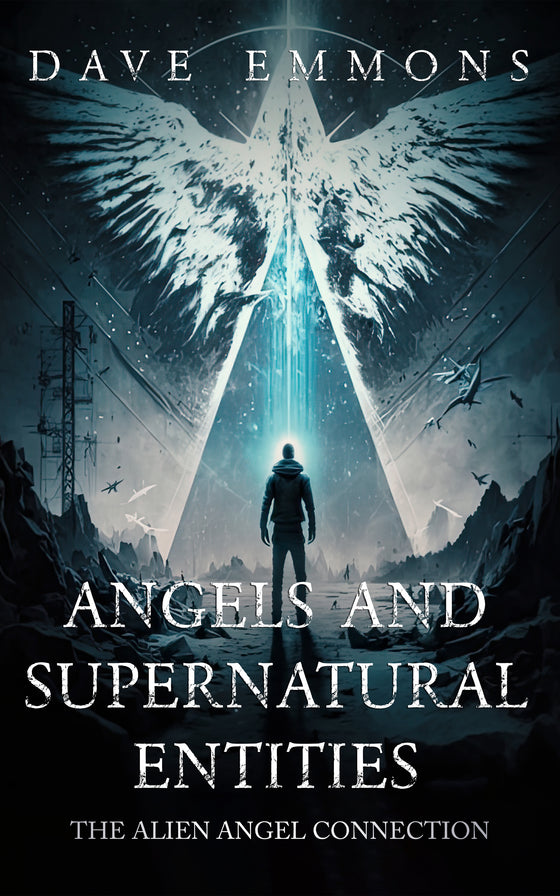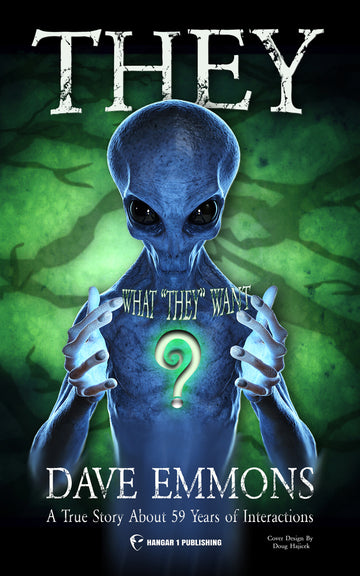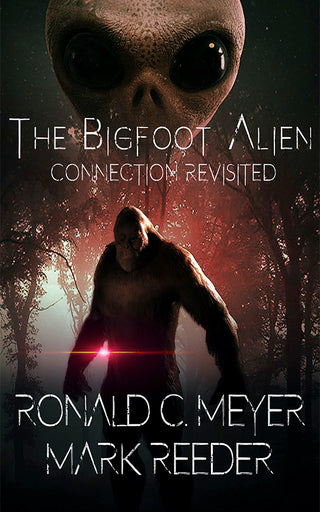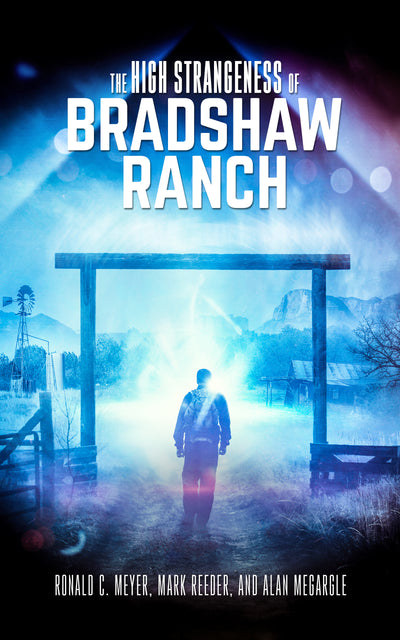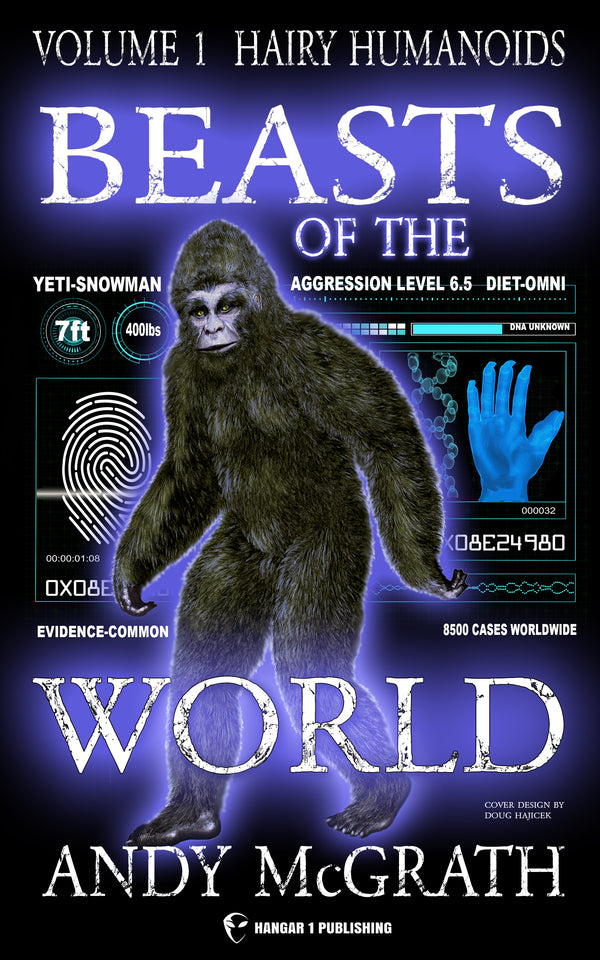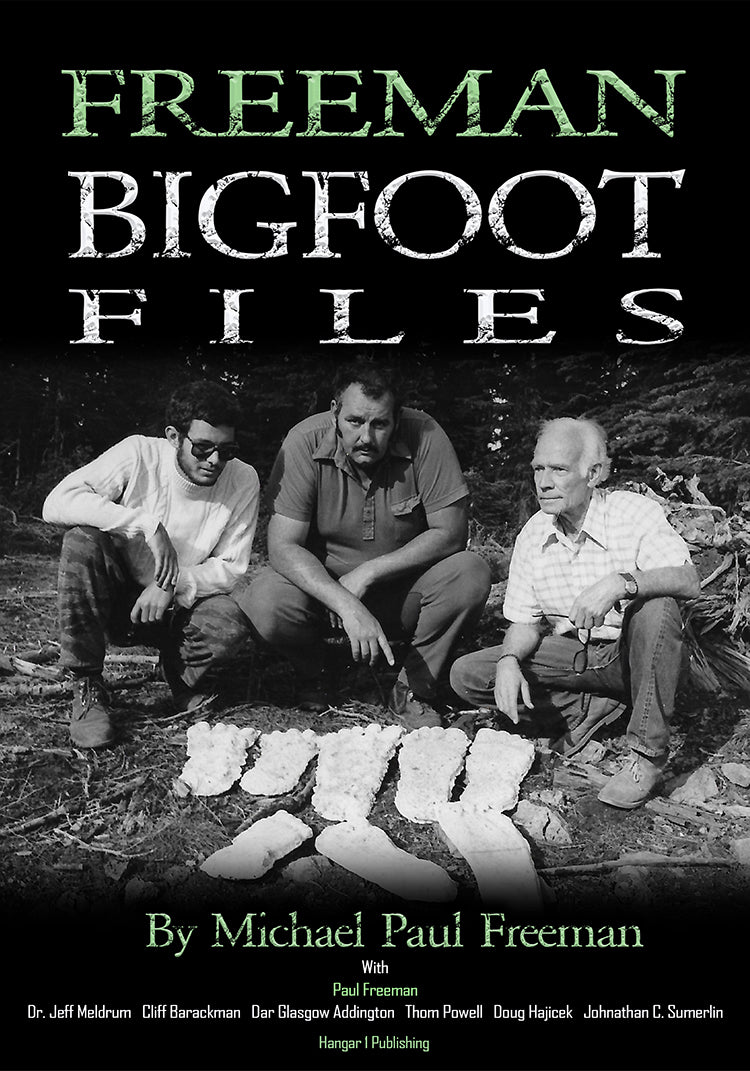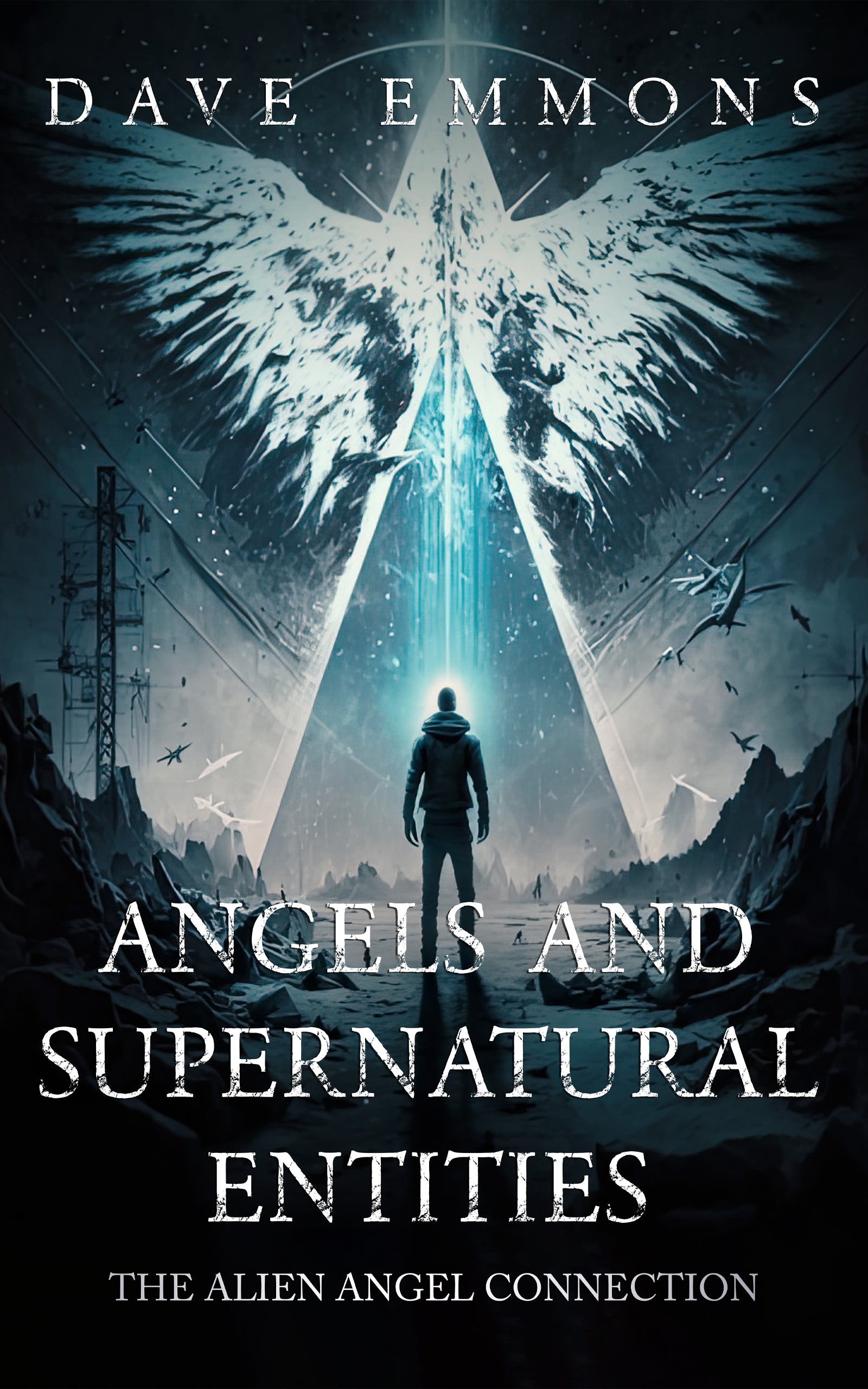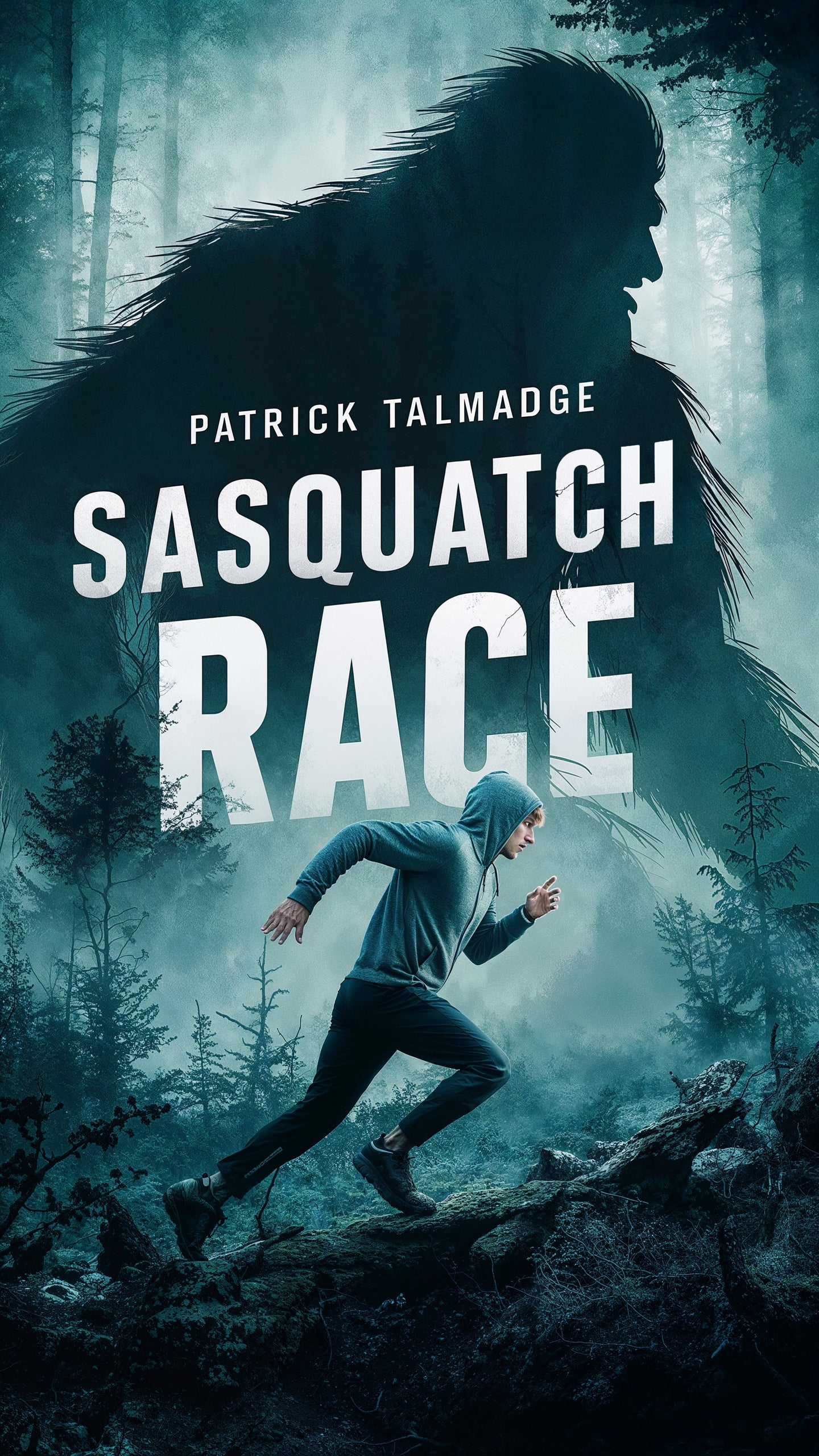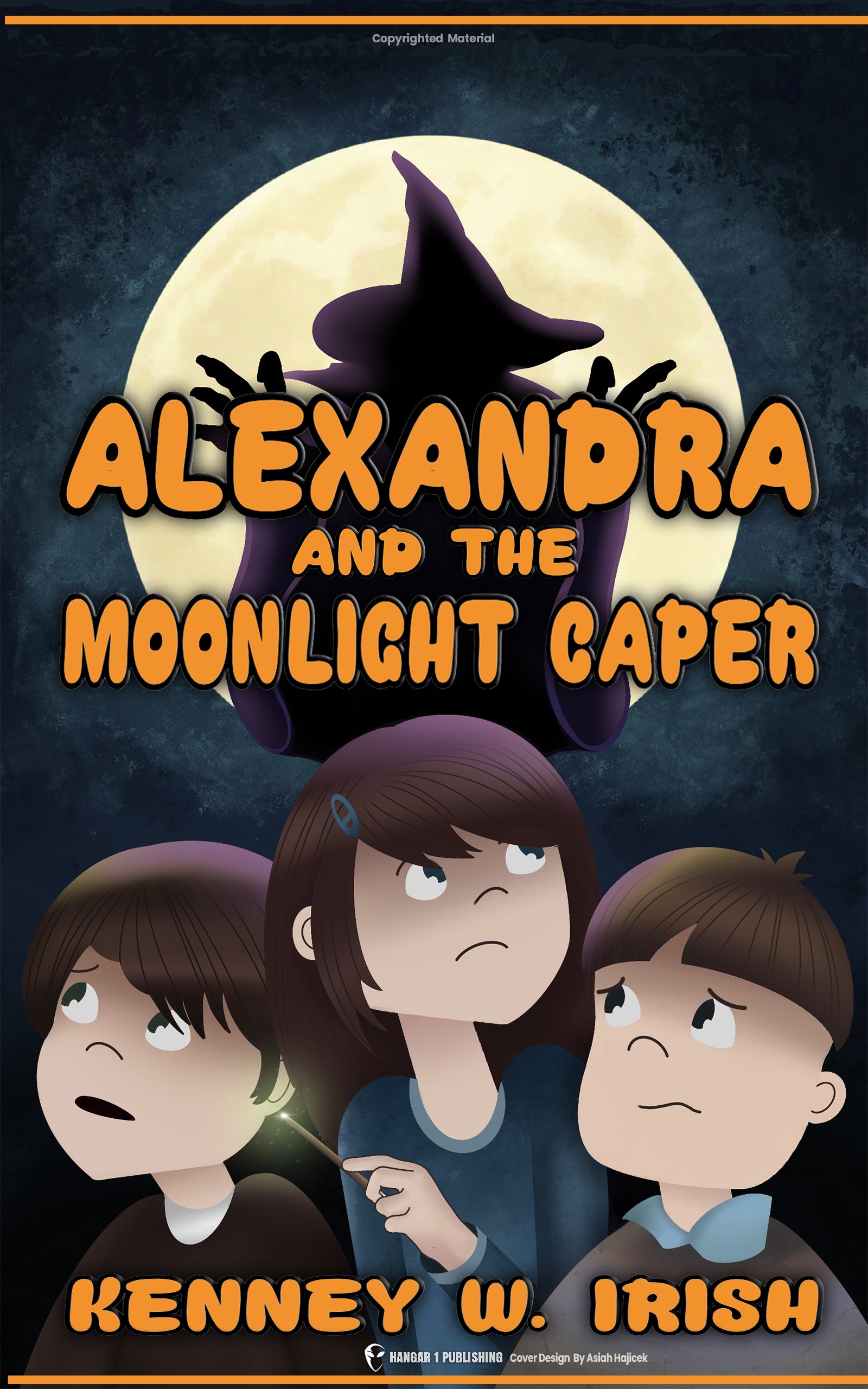Andrew D. Basiago Claims: Time Travel, Mars, and Secret Projects
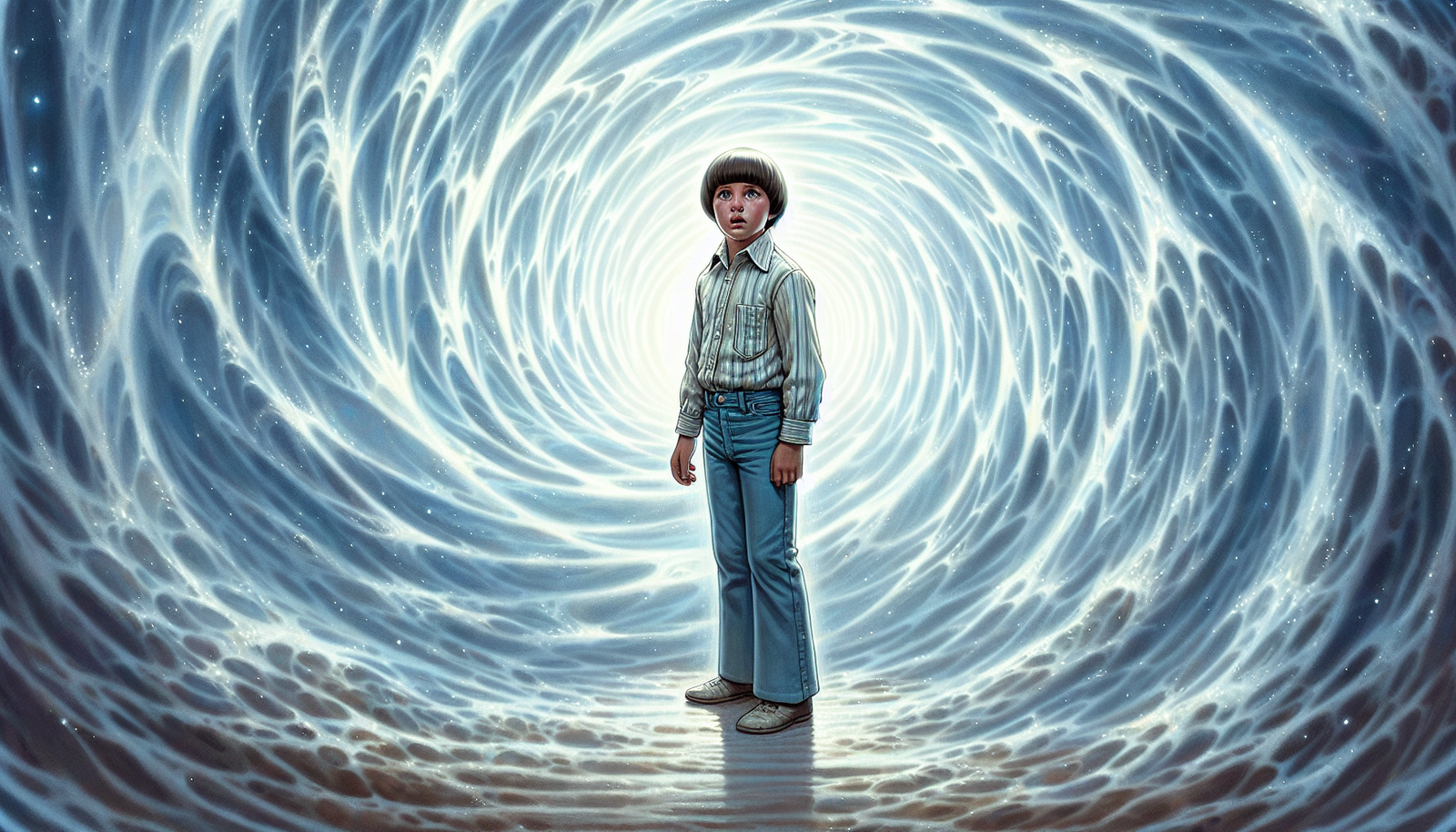
By Elaine Westfield, Ufologist
What if I told you that the United States government mastered time travel decades ago? That teleportation technology isn't just possible but has been operational since the 1960s? And that a young Barack Obama was secretly sent to Mars as part of a classified interplanetary program?
These are just a few of the extraordinary claims made by Andrew D. Basiago, a Washington state lawyer who insists he's been traveling through time and space since childhood as part of a secret government program. Basiago isn't your typical conspiracy theorist lurking in the shadows of internet forums. He's a practicing attorney, a former U.S. presidential candidate, and a self-proclaimed "chrononaut" who speaks with the measured confidence of someone presenting a legal case.
While mainstream science firmly rejects the possibility of time travel as Basiago describes it, and government agencies deny his allegations, his detailed accounts have garnered attention from those interested in government secrecy, suppressed technologies, and extraterrestrial contact. This article explores the breadth of Basiago's claims, from the technology he describes to his alleged journeys through time and space, his political motivations, and the skepticism surrounding his narrative.
Whether you approach this as a fascinating tale of science fiction, a window into the psychology of belief, or potentially the most significant whistleblower account in human history likely depends on your perspective. But one thing is certain: the rabbit hole Basiago invites us to enter runs deeper than anyone might initially expect.
The Genesis of Claims: Project Pegasus Unearthed
Andrew Daniel Basiago was born in 1961, spending his childhood between New Jersey and Southern California. According to Basiago, he was identified early as an "Indigo child" with special abilities, including "the ability to use his mind to levitate small objects and to perform telepathy by reading the minds of others."
The foundation of Basiago's extraordinary claims rests significantly on the role of his father, Raymond F. Basiago. According to Andrew, his father was far more than just an engineer-he was a key figure in some of the government's most classified technological pursuits.
Raymond, a 1951 graduate of Lehigh University with a degree from what was then considered the world's leading electrical engineering program, initially worked for the Okanite Company in Paramus, New Jersey. But his career took a dramatic turn in the early 1950s when, according to Andrew, an Air Force colonel approached Raymond about a special project: designing a metal alloy for ramjet engines that could withstand the friction of atmospheric molecules and space dust without melting.
This timing coincides with a wave of reported UFO sightings above the U.S. Capitol in 1952, which Andrew suggests was the catalyst for the government's sudden interest in developing advanced aerospace technology. As Andrew tells it, the government was scrambling to catch up to whatever was flying in our skies.
From 1956 to 1964, Raymond allegedly shifted his focus to even more exotic research, studying teleportation at the Thomas Edison Research Laboratory in West Orange, New Jersey. His task? To replicate the teleportation experiments of Nikola Tesla, essentially trying to create a portal through the fabric of time itself. This work eventually led him to the Ralph M. Parsons Company, where he reportedly served as the chief technical liaison between Parsons and the CIA on Tesla teleportation projects.
It was at the Curtiss-Wright aeronautical facility in Woodbridge, New Jersey (Building 68) that young Andrew would first encounter the technology that would shape his life. In 1968, at the age of six, Andrew claims his father took him to work and introduced him to what appeared to be a primitive teleportation device.
"I was astonished by what I saw," Andrew recalls. The machine consisted of two curved, parentheses-shaped booms, with a shimmering energy field between them. His father held his hand and explained they would jump through on the count of three, see light briefly, and find themselves in another part of the country.
This introduction would allegedly become the precursor to Andrew's official recruitment into what he calls "Project Pegasus."
According to Basiago, Project Pegasus was a classified operation jointly run by the CIA and DARPA (Defense Advanced Research Projects Agency) from 1962 to 1972. DARPA, known as the military's "think tank" and gadget lab, was ostensibly exploring technologies that could give America a decisive edge in the Cold War.
The project's goals were nothing short of revolutionary: to develop teleportation, physical time travel, and holographic time travel. But the methods employed were equally extraordinary, according to Basiago. He claims the program drew on a bizarre amalgamation of knowledge sources: ancient Babylonian, Sumerian, and Egyptian wisdom; extraterrestrial technology recovered from UFO crash sites and ET-human liaison projects; and even foreign research from Nazi Germany and Soviet Russia.
All these elements came together through the work of Nikola Tesla. After Tesla's death in 1943, the U.S. government reportedly seized papers from his New York apartment that contained the schematics for a teleportation device. This technology, hidden from the public, provided the final piece of the puzzle needed to make Project Pegasus operational.
The Machinery of Time: Explaining the Technology
At the heart of Basiago's claims about time travel and teleportation is a concept he attributes to Nikola Tesla: "radiant energy." This isn't the electromagnetic energy that powers our homes or the nuclear energy that fuels stars. According to Basiago, radiant energy is something altogether different-a latent, pervasive force that exists throughout the universe.
"Radiant energy is a form of energy that Tesla discovered that is latent and pervasive in the universe and has among its properties the capacity to bend time-space," Basiago explains. It's a concept that modern physicists might struggle to categorize, as Basiago himself admits that someone who has never experienced it would have difficulty describing it-"like asking someone to describe swimming when they've never experienced water."
The teleportation device that allegedly harnessed this energy consisted of two gray elliptical booms, approximately eight feet tall, positioned about ten feet apart. When activated, this apparatus generated what Basiago describes as a "shimmering curtain" of radiant energy between the booms. The visual effect was apparently similar to water, creating a translucent barrier of energy.
To initiate teleportation, participants would physically jump into this energy field. As Basiago recounts from his first experience with his father: "Son, when we leap, I want you just to leap and leap at the center of the field of energy. Don't look back, don't reach back, just hit it with me."
Upon entering this field, a "vortal tunnel" would form around the travelers. Inside this tunnel, Basiago describes seeing a bluish-white light and witnessing "intervening events" flash by on either side. "Essentially, in a sense, the whole universe was being moved past us," he says. The experience bears little resemblance to the instantaneous dematerialization and rematerialization depicted in science fiction shows like Star Trek. Instead, Basiago compares it more to the dimensional portals seen in the TV show Sliders, where travelers pass through a tunnel to reach alternate realities.
The process wasn't without risks. In one of the more disturbing claims, Basiago alleges that during early tests, a boy's feet were "sheared off" after teleportation, highlighting the experimental nature and dangers of the technology being developed.
Beyond physical teleportation, Project Pegasus allegedly developed another technology called "Chronovision." This device reportedly generated holograms of past or future events by channeling an electromagnetic signal through "an octagonal, an eight-sided array of bismuth crystals." The technology could supposedly capture events throughout history as two-dimensional images, like watching a movie of the past or future.
According to Basiago, Chronovision was used to record historically significant events such as the crucifixion of Jesus, the signing of the Declaration of Independence, and Abraham Lincoln's speeches. The technology was purportedly developed by "two Vatican musicologists" before being transferred to the U.S. government.
What began as a viewing technology eventually evolved into a form of time travel itself. When the projection was holographic rather than two-dimensional, it reportedly transformed into an actual portal to that time period, allowing physical interaction with the past or future.
Basiago uses the term "quantum access capability" to describe these technologies collectively, categorizing them into two types: physical teleportation to the past or future, and Chronovision, which functioned as a sort of "looking glass" to gather intelligence about specific times and places.
Perhaps most shocking is Basiago's claim about why this technology remains secret. He suggests that upon discovery, government scientists advised keeping these advancements hidden from the public. The reasoning? These technologies would radically disrupt entire industries built around conventional transportation. However, Basiago counters this logic, arguing that "The historical record actually shows that when we introduce the best available technology...it actually leads to more production, less environmental impact, and more job creation."
Journeys Through Time: Personal Accounts and Controversial Claims
According to Basiago, his first teleportation experience with his father in 1968 was just the beginning. By 1969, at the age of seven, he was officially recruited into Project Pegasus as a "chrononaut" or "time-space cadet." But this wasn't just about exploration-the children selected for the program reportedly underwent extensive training that Basiago calls "alpha intelligence training."
This training wasn't child's play. Participants were taught advanced observation techniques, memory enhancement, reporting protocols, and self-defense methods-including, disturbingly, "how to take a human life if needed." They were being prepared as "psychic spies," trained to advance both CIA intelligence gathering and DARPA's time travel experiments.
After training, Basiago's journeys began gradually. His first solo jump was reportedly just one hour into the past, allowing his body to acclimate to the sensation of time displacement. But soon, his missions grew more ambitious, taking him to pivotal moments in human history.
The primary purpose of these temporal expeditions, according to Basiago, was intelligence gathering. The U.S. government wanted to verify historical accounts of significant figures and events, particularly those central to religious or national identity.
Basiago's most famous alleged time travel experience-and the one for which he claims to have photographic evidence-was his trip to Abraham Lincoln's Gettysburg Address in 1863. As a seven-year-old boy in 1972, Basiago says he was teleported to Gettysburg but arrived poorly equipped for 19th-century Pennsylvania: barefoot and inappropriately dressed. He claims a Union shopkeeper took pity on him, providing him with a period-appropriate uniform and oversized shoes.
"I was dressed in vintage clothes and looked like an ordinary boy," Basiago recounts. "I was wearing huge men's shoes and it was only about 100 steps from the place of my arrival to the place in the picture. I was filmed very close to Lincoln."
The "picture" he references is the famous Josephine Cobb photograph of Lincoln at Gettysburg. Basiago claims that a small boy visible in the foreground of this historical photograph is actually him-evidence of his presence at one of America's most iconic moments. This assertion has been met with significant skepticism from historians and photo analysts, who identify the figure simply as one of many children present at the event.
Beyond Gettysburg, Basiago claims to have been sent on even more extraordinary missions. He says he traveled to the Middle East to observe Jesus, providing eyewitness verification of events described in religious texts. He also reports visiting George Washington during the Revolutionary War, again serving as a firsthand observer to confirm historical accounts.
Perhaps the most complex of Basiago's historical visits were his multiple trips to Ford's Theatre on the night of Lincoln's assassination in 1865. He claims to have been sent there "five to six different times" but never witnessed the actual moment of assassination-only hearing the gunshot and seeing the subsequent chaos.
What makes these Ford's Theatre visits particularly strange is Basiago's claim that he encountered himself there. "As these visits accumulated, I bumped into myself twice on two different visits," he explains. Rather than indicating a paradox or error, Basiago interprets these self-encounters as evidence that he was being sent to "slightly different alternate realities located on adjacent timelines."
This concept of multiple, slightly different timelines being accessible through Project Pegasus technology represents one of the more complex aspects of Basiago's claims. He describes being concerned about his "cover" being blown after these self-encounters, suggesting the program operators were aware of the possibility of such timeline anomalies.
Basiago's temporal journeys weren't limited to the past. He claims to have been sent to the year 2045, transported to a building constructed of "emerald and tungsten steel." His mission was straightforward: retrieve miniature canisters containing microfilm summaries of historical events between 1972 and 2045, and bring this future knowledge back to the 1970s.
Though he says he spent only about five minutes in 2045, Basiago describes it as a "garden city of tomorrow" with a harmonious balance between built and natural environments. He noted the absence of cars and pollution, suggesting a "clear positive transformation of society" centered around the adoption of teleportation technology for transportation. He also observed that young people appeared "taller and thinner," possibly indicating improved prenatal care in this future.
The Martian Connection: Teleportation to the Red Planet
If Basiago's claims about time travel strain credulity, his assertions about Mars might break it entirely. Yet he presents them with the same matter-of-fact delivery as his other experiences, creating one of the most extraordinary chapters in his narrative.
According to Basiago, in the early 1980s, he participated in another secret program-this one focused not on traversing time but space. The CIA allegedly operated a "Mars Jump Room" program that utilized teleportation technology to send humans to the Red Planet. Basiago claims he made "numerous visits to Mars" during this period, after being "tapped to join the CIA's Mars 'jump room' program."
But the most shocking aspect of this claim isn't just that Americans were secretly teleporting to Mars in the 1980s-it's who allegedly accompanied him. Basiago asserts that among his fellow Mars travelers was a young Barack Obama, then known as "Barry Soetoro."
"I remember Barack Obama being on Mars," Basiago stated firmly in interviews. This claim doesn't come from Basiago alone; William Stillings, another self-professed Project Pegasus participant, corroborates the story, stating that he too was part of this Mars program alongside Obama.
According to their account, they attended a "Mars training class" at California's College of the Siskiyous in 1980, as part of a group of ten young adults selected for the Mars teleportation program. Among this group was allegedly not only the future President but also Regina Dugan, who would later become the director of DARPA in 2009. Interestingly, Obama would appoint Dugan to this position during his presidency-a connection Basiago points to as evidence of their shared secret past.
Basiago claims to have encountered Obama on Mars on at least two occasions between 1981 and 1983. During one encounter, Basiago says he exchanged words with the future president en route to the "jump room" while on the Martian surface. "We're here," Obama allegedly said to him-a mundane statement in an extraordinary context.
What was the purpose of sending teenagers to Mars? According to Basiago, the mission was to "acclimate Martian humanoids and animals to their presence," essentially serving as ambassadors to prepare for future human settlement. The program allegedly involved establishing a defense resume for Earth by asserting "territorial sovereignty" over Mars.
Basiago also links Obama's mother, Stanley Ann Dunham, to this narrative, claiming she was an "experienced CIA agent" who had carried out assignments in Kenya and Indonesia-suggesting a family connection to intelligence operations that preceded Obama's alleged Mars trips.
The White House has, predictably, denied these claims. When asked directly by Wired magazine about Obama's alleged time travel and Mars visits, a White House staffer responded dismissively: "Only if you count watching Marvin the Martian." Basiago views this denial as a betrayal, saying Obama was "literally lying, to deny the involvement of a set of Americans who put their lives at risk at a very young age, doing what their country asked of them."
Life on Mars, according to Basiago, is nothing like the barren, lifeless landscape that NASA's rovers have shown the public. In a 2012 PowerPoint presentation, he described "walking lizards" on the Martian surface-possibly referring to a reptilian species. He claims to have spoken with "extremely intelligent beings" during his visits.
The physical experience of teleporting to Mars was allegedly distinct from time travel on Earth. Basiago reports that "each time he was sent there he and everyone else would experience severe dehydration," suggesting that interplanetary teleportation had unique physical effects.
Training for these Mars missions was reportedly led by Major Ed Dames, described as a "decorated military intelligence officer." The training courses aimed to prepare participants for what they would encounter on the Martian surface, including "predatory species, Martian humanoids, etc." However, in recent years, Major Dames has reportedly distanced himself from these claims.
The teleportation to Mars allegedly occurred through a "jump room" located in El Segundo, California, which served as a portal connecting Earth to a United States base already established on Mars. This suggests that conventional space travel had already secretly succeeded in establishing a human presence on the Red Planet before the teleportation program began.
The Whistleblower and the Political Platform: Truth, Reform, and Innovation
Andrew Basiago doesn't see himself merely as a participant in classified government programs-he considers himself a "planetary-level whistleblower" with a mission to expose the truth about technologies that could transform human civilization. This self-perception shapes not only how he presents his past experiences but also his political aspirations and policy goals.
Basiago first began publicly sharing his claims in 2004, focusing initially on his alleged discoveries of life on Mars. By 2011, he was fully disclosing his purported experiences with Project Pegasus and the Mars Jump Room program. His emergence as a whistleblower was, according to some supporters, predicted by a technology called the "Web Bot," which allegedly foresaw a "planetary whistleblower" emerging from a period of U.S. financial collapse. The Web Bot's creator, Clif High, reportedly identified Basiago as "very likely" this predicted figure.
Central to Basiago's whistleblowing campaign is his advocacy for what he calls the "Truth Movement." He has actively lobbied the U.S. government to disclose the existence of time travel, teleportation, and contact with extraterrestrial beings. His motivation, he claims, is not self-aggrandizement but a genuine belief that these technologies-particularly teleportation-could solve many of humanity's most pressing problems, especially environmental challenges related to transportation.
"Primarily, my goal has been to bring forth the teleportation technology that Project Pegasus developed forward, and utilize it in the civilian sector," Basiago explains. He envisions a world where teleports replace airports for "real-time transits between major transport hubs around the world," eliminating "billions of tons of pollutants" that would otherwise enter the atmosphere from conventional transportation.
This vision forms the foundation of Basiago's political platform. He ran for President of the United States as an independent candidate in both 2016 and 2020, using these campaigns as vehicles to promote his disclosure agenda. His campaign website expressed his core belief that "For 70 years, the US government has been concealing advanced technologies because they might be socially, economically, or technically disruptive in nature."
Perhaps the most unusual aspect of Basiago's political ambitions is his claim to already know the outcome. "I have prior knowledge that not only will I run for president, but that during one of the elections-which would have to be between 2016 and 2028, because I'm not running past that-I'm either elected president or vice president," he stated confidently. This foreknowledge, he claims, comes from "people with career associations in the CIA."
This leads to one of the more conspiracy-laden aspects of Basiago's narrative: the concept of "chronogarky," a term describing those who rule through time manipulation. According to Basiago, the U.S. government has used time travel technology not just for intelligence gathering but to identify future presidents decades before they take office. He claims that George H.W. Bush, Bill Clinton, George W. Bush, Barack Obama, and possibly Donald Trump were all pre-identified as future presidents in 1971.
"I have a vague memory that my father took special note of Trump during an appearance by him on The Phil Donahue Show and might have even commented that he was a future U.S. President," Basiago stated regarding Trump's potential inclusion in this presidential pre-identification program.
Beyond just identification, Basiago alleges these future presidents were actually briefed about their destinies years in advance and "groomed" for their future positions by DARPA and CIA personnel. He claims to have personally witnessed some of these briefings, though he provides few specific details about these encounters.
Basiago's presidential platform was built around three core principles: Truth, Reform, and Innovation. Truth referred to his commitment to government transparency, particularly regarding classified technologies. Reform involved changing power structures within the executive office. Innovation centered on making technological advancement-especially teleportation-the focus of his policies.
Among his more unusual policy positions was his advocacy for protecting Sasquatch by adding them to the Endangered Species List. "Sasquatch exists," Basiago declared on his campaign website. "I know. I am the first United States presidential candidate since Theodore Roosevelt to declare publicly that I have encountered Sasquatch." He claimed to have encountered "an adult male Sasquatch and his young son" while camping in 1966 and proposed that these creatures have "matrilineal DNA that is human" combined with "patrilineal DNA from an unknown primate."
Basiago also expressed oddly specific concerns about Microsoft Word, proposing to investigate "why Microsoft, after perfecting Word in its 2003 version, substituted it with a far inferior version in Word 2007." This particular grievance, unrelated to his major claims, adds an eccentric personal touch to his political platform.
Skepticism, Controversy, and the Search for Evidence
Basiago's claims about time travel, teleportation, and Mars visits exist far outside the boundaries of established science, inviting significant skepticism and controversy. The reaction from scientific communities, government officials, and even many within the broader conspiracy theory ecosystem has been predominantly dismissive.
From a scientific perspective, Basiago's descriptions of time travel technology fundamentally contradict our understanding of physics. The principle that nothing can travel faster than the speed of light, established by Einstein's Theory of Relativity, presents a significant barrier to the kind of time travel Basiago describes. While theoretical physics does allow for certain types of time dilation and has speculated about concepts like wormholes, the practical teleportation of humans to the past or future remains firmly in the realm of science fiction.
The lack of empirical evidence supporting Basiago's claims is perhaps the most obvious criticism. Despite his detailed accounts, there is no independently verifiable scientific proof of Project Pegasus, the teleportation technology, or the Mars Jump Room program he describes. The burden of proof for such extraordinary claims would normally require extraordinary evidence, yet Basiago offers primarily his personal testimony, with limited corroboration.
His most concrete piece of evidence-the claim that he appears in a photograph of Lincoln's Gettysburg Address-has been extensively analyzed. Historians and photo experts generally identify the figure in question simply as one of many children present at the event, with nothing unusual about the image that would suggest a time traveler from the future.
Some critics have pointed to inconsistencies or evolving details in Basiago's narrative over time, suggesting his story has been embellished or altered. Others speculate about psychological explanations, including the possibility of confabulation or False Memory Syndrome (FMS), where a person genuinely believes in memories that are objectively inaccurate.
When Basiago ran for president, he was often portrayed in media reports as an eccentric candidate with outlandish claims. The satirical comedy show @Midnight featured his candidacy as comedy fodder. The stigma attached to his claims has undoubtedly affected public perception of his credibility.
Perhaps most telling is the lack of widespread corroboration from other alleged participants in these programs. While Basiago cites William Stillings as confirming his claims about Obama on Mars, Major Ed Dames-whom Basiago identifies as a training leader-has reportedly distanced himself from these assertions. The general absence of multiple, credible whistleblowers coming forward with similar accounts raises questions about the programs' existence.
The White House explicitly denied Basiago's claims about Obama's participation in Mars teleportation. When asked directly by Wired magazine, a White House staffer responded dismissively, indicating the administration viewed the allegations as absurd rather than as sensitive classified information requiring a careful response.
However, the nature of truly classified programs creates an epistemic challenge. If such programs were indeed as secret as Basiago claims, they would be designed to maintain plausible deniability and leave minimal evidence trail. Absence of evidence is not necessarily evidence of absence when dealing with allegations of highly classified activities.
There are historical precedents for once-denied government programs later being revealed as real. The CIA's MKUltra mind control experiments, aspects of the Manhattan Project, and various surveillance programs were all once officially denied before eventually being acknowledged. This pattern of government secrecy has created fertile ground for theories like Basiago's to find receptive audiences.
Some observers have proposed a "smokescreen" hypothesis-that legitimate classified research into unusual phenomena may exist, but Basiago's specific narrative serves as either disinformation or is a misinterpretation of more conventional programs. Under this theory, aspects of his claims might contain kernels of truth buried within fictional or misunderstood elements.
The Cultural Impact and Enduring Fascination
Regardless of their veracity, Andrew Basiago's claims have carved out a distinct place in contemporary conspiracy culture, resonating with communities interested in government secrecy, suppressed technology, and extraterrestrial contact. This cultural impact and the psychological factors that drive continued interest in his narrative are worth examining in their own right.
Basiago's accounts find their most receptive audience within what might be called the "alternative knowledge" community-people who are skeptical of official narratives and open to the possibility of hidden realities. His podcast appearances on popular programs like Coast to Coast AM, a long-running late-night radio show focused on paranormal topics and conspiracy theories, have introduced his claims to millions of listeners predisposed to considering unconventional ideas.
What sets Basiago apart from many figures in this space is his educational background and professional status. As a lawyer with a Harvard education, he presents his extraordinary claims with the vocabulary and demeanor of the establishment he claims to be exposing. This creates a cognitive dissonance that some find compelling-how could someone with his credentials risk his professional reputation with such outlandish stories unless they contained some truth?
His narrative also neatly connects to several established conspiracy theories: the government seizure of Tesla's papers, classified DARPA research, CIA black operations, and the belief in extraterrestrial contact. By interweaving these elements, Basiago creates a tapestry that feels coherent to those already familiar with these individual threads.
There are striking parallels between Basiago's claims and themes in science fiction. His descriptions of teleportation technology, time travel paradoxes, and visits to Mars echo elements from shows like Star Trek, Doctor Who, and The Expanse. Whether consciously or unconsciously, these cultural touchstones provide a familiar framework that makes his narrative more accessible and believable to audiences steeped in science fiction.
Psychologically, stories like Basiago's fulfill several human needs. They offer a sense that someone has "special knowledge"-a peek behind the curtain of reality that most people never get to see. They provide coherent explanations for complex phenomena and historical events. And they suggest that transformative technologies exist that could solve major problems like climate change, if only they were released to the public.
The appeal of conspiracy narratives often increases during periods of social instability or institutional distrust. When people feel conventional sources of authority are unreliable, alternative explanations gain traction. Basiago's emergence during the post-9/11 era and his continued visibility through the 2008 financial crisis and subsequent political polarization aligns with periods of heightened institutional skepticism in American society.
His political campaigns, while unsuccessful, created opportunities for broader media exposure. Even coverage that treated his claims dismissively spread awareness of his narrative to audiences that might otherwise never have encountered it. The internet has further amplified his reach, with YouTube videos of his interviews accumulating hundreds of thousands of views and online forums dedicated to discussing his claims.
Basiago has inspired a community of believers who actively promote and expand upon his narrative. Some conduct their own investigations, attempting to verify elements of his claims or connect them to other conspiracy theories. Others use his framework to interpret their own unusual experiences or to make sense of current events through the lens of time manipulation and secret technology.
Even for those who don't believe Basiago's specific claims, his narrative raises provocative questions about the nature of classified research, the limits of current technology, and the possibility of breakthrough discoveries being kept from the public. In this sense, his stories serve as thought experiments that prompt consideration of the boundaries between known science and future possibilities.
Legacy and Final Questions
As Andrew Basiago continues to share his extraordinary claims and pursue his political ambitions, questions persist about the nature of his legacy and the ultimate significance of his narrative. What are we to make of a story that defies conventional understanding yet is told with such conviction and detail?
Basiago's political bids have thus far failed to gain significant traction. His 2016 campaign as an independent candidate did not meaningfully impact the presidential race, and his subsequent 2020 effort remained similarly marginal. Yet he maintains that his election as either President or Vice President will occur by 2028, based on his claimed foreknowledge of future events. Only time will tell whether this prediction proves accurate.
The most profound unanswered questions surrounding Basiago's claims concern their fundamental nature. Are they fabrications-either deliberate or the product of sincere but mistaken beliefs? Are they misinterpretations of more conventional experiences? Could they contain elements of truth embedded within a framework of misunderstanding? Or, most extraordinarily, could they be substantially accurate accounts of classified technologies beyond our current scientific paradigm?
For the scientific community, the answer seems clear: Basiago's claims contradict established physics and lack empirical evidence. For believers in government conspiracy, his narrative confirms suspicions about hidden technologies and suppressed knowledge. Most people likely fall somewhere between-intrigued by the possibilities but skeptical of the specific details.
The Gettysburg photograph that Basiago provides as evidence remains a point of contention. Is the boy in the image truly Basiago transported from the 1970s? Or is this a case of pareidolia-seeing patterns and meaning in ordinary images? Without additional evidence, this question may never be definitively resolved.
Similarly, the absence of Obama's acknowledgment or denial of the alleged Mars trips leaves another thread untied. While the White House dismissed the claims during his presidency, Obama himself has not directly addressed the specific allegations, allowing them to persist in the conspiracy ecosystem.
Basiago's narrative raises broader questions about the nature of classified research and technological development. How advanced are the actual classified technologies being developed by agencies like DARPA? What capabilities might exist beyond public knowledge? While teleportation and time travel as described by Basiago seem implausible, the gap between public science and classified research remains an open question.
The psychological aspects of Basiago's claims also invite examination. What drives someone with his background and education to make such extraordinary assertions? Is it a genuine belief based on real experiences, a complex delusion, or something else entirely? Without access to his inner thoughts, these questions remain speculative.
Whether Basiago's claims are ultimately vindicated or debunked, they have already secured a place in the cultural landscape of conspiracy theories and alternative narratives. His detailed accounts of Project Pegasus, trips to historical events, and Mars teleportation have become reference points in discussions about secret government programs and suppressed technologies.
Perhaps the most significant legacy of Basiago's claims is their demonstration of how powerfully appealing alternative explanations of reality can be, especially when they promise transformative technologies and hidden knowledge. In a world of increasing complexity and institutional distrust, narratives that offer clarity and purpose-even if extraordinary-find receptive audiences.
As we consider the "Andrew D. Basiago Claims," we might ask ourselves: What do we really know about the boundaries of physical possibility? How transparent are governments about their classified research? And what psychological needs do these alternative narratives fulfill?
Whether you view Basiago as a genuine whistleblower, a skilled storyteller, or something in between, his claims invite us to question our assumptions about reality, technology, and the nature of knowledge itself. In that sense, regardless of their factual status, they serve as a mirror reflecting our collective fascination with the unknown and the possible.
What do you think? Are Basiago's claims glimpses of hidden truth or elaborate fiction? Could teleportation and time travel technologies exist beyond public knowledge? And if they did, should they be disclosed? The questions linger, even as definitive answers remain elusive.
From Bigfoot to UFOs: Hangar 1 Publishing Has You Covered!
Explore Untold Stories: Venture into the world of UFOs, cryptids, Bigfoot, and beyond. Every story is a journey into the extraordinary.
Immersive Book Technology: Experience real videos, sights, and sounds within our books. Its not just reading; its an adventure.








